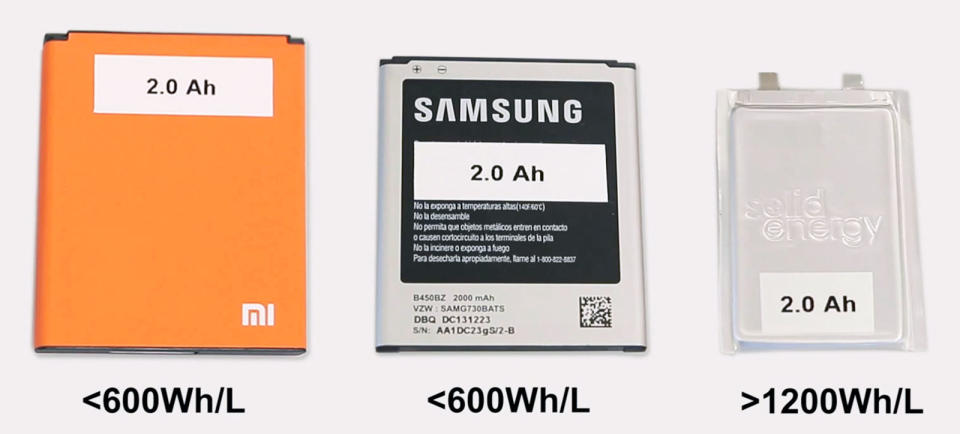Smartphone batteries with twice the life may arrive in 2017
SolidEnergy is preparing to commercialize its "lithium metal" tech.

A type of lithium battery that could make gasoline-powered cars obsolete is on track to be commercialized, according to MIT News. The "lithium metal" batteries, developed by MIT spin-off SolidEnergy, can reportedly pack the same energy as a standard lithium-ion cell in half the size. "Or, we can make a battery the same size as a lithium ion battery, but now it will last twice as long," says SolidEnergy CEO Qichao Hu.
Researchers have been working on batteries that use lithium metal instead of carbon anodes for awhile. However, nobody had cracked the problem of increased resistance and "dendrite" filaments that form on the anodes, making batteries short-circuit and heat up. While at MIT, Hu developed a thin lithium metal foil anode that did reduce battery size considerably. However, it wouldn't work unless the battery was heated up to 175 degrees Fahrenheit, an obvious "showstopper," he says.

To solve that, the team developed a solid electrolyte coating for the lithium metal foil that functions at room temperature. Hu also formulated a non-flammable liquid electrolyte with less resistance that won't create dendrites when it reacts with the lithium metal. The end result is a battery with the same power as a modern lithium cell in half the size.
Investors soured on battery tech when another MIT spinoff, A123 systems, went bankrupt because it's tech didn't work. However, SolidEnergy took over A123's idle facility, which forced it to build its own batteries in a commercially practical way. "By starting with this real-world manufacturing perspective and building real-world batteries, we were able to understand what materials worked in those processes, and then work backwards to design new materials," says Hu.
SolidEnergy promo video from 2015
The company now has its own facility and is building towards a November 2016 launch with drone batteries. Following that, it plans to commercialize cells for smartphones and other electronics in 2017, with EV batteries to follow in 2018. In theory, electric cars using the tech could go twice as far with the same size battery -- a 280 mile-range Tesla Model S could go 560 miles, for instance.
Obviously, that would be game-changing, but we've heard this tune before. A123 itself was trying to commercialize very promising-sounding batteries, and failed. We'd like to hear SolidEnergy's latest charging cycle figures -- last we heard, it could handle 300 cycles and still retain 80 percent capacity, which is good for electronics but may be too little for an EV. Also, we've been disappointed with battery "breakthroughs" so often, that we'll believe it when we see them on a store shelf.
